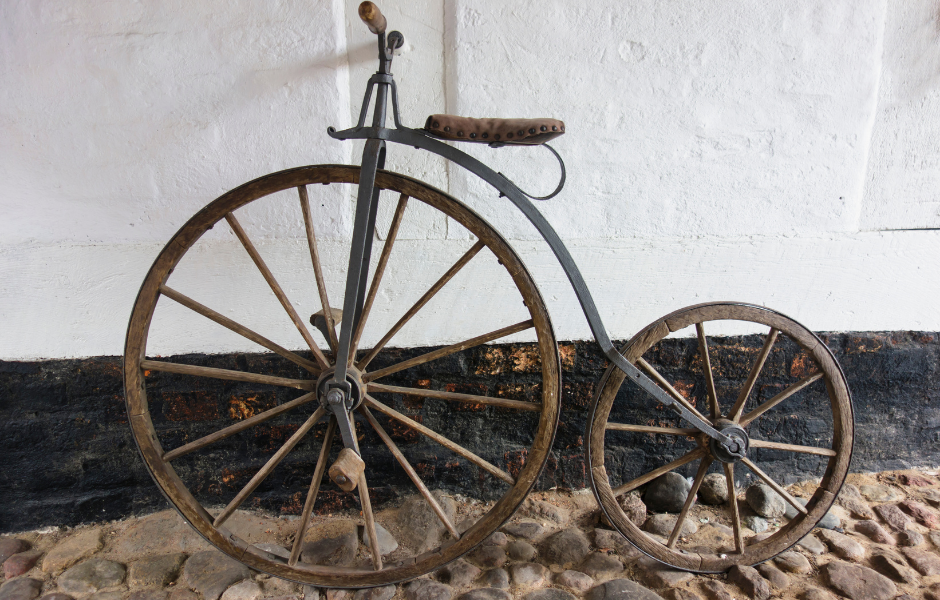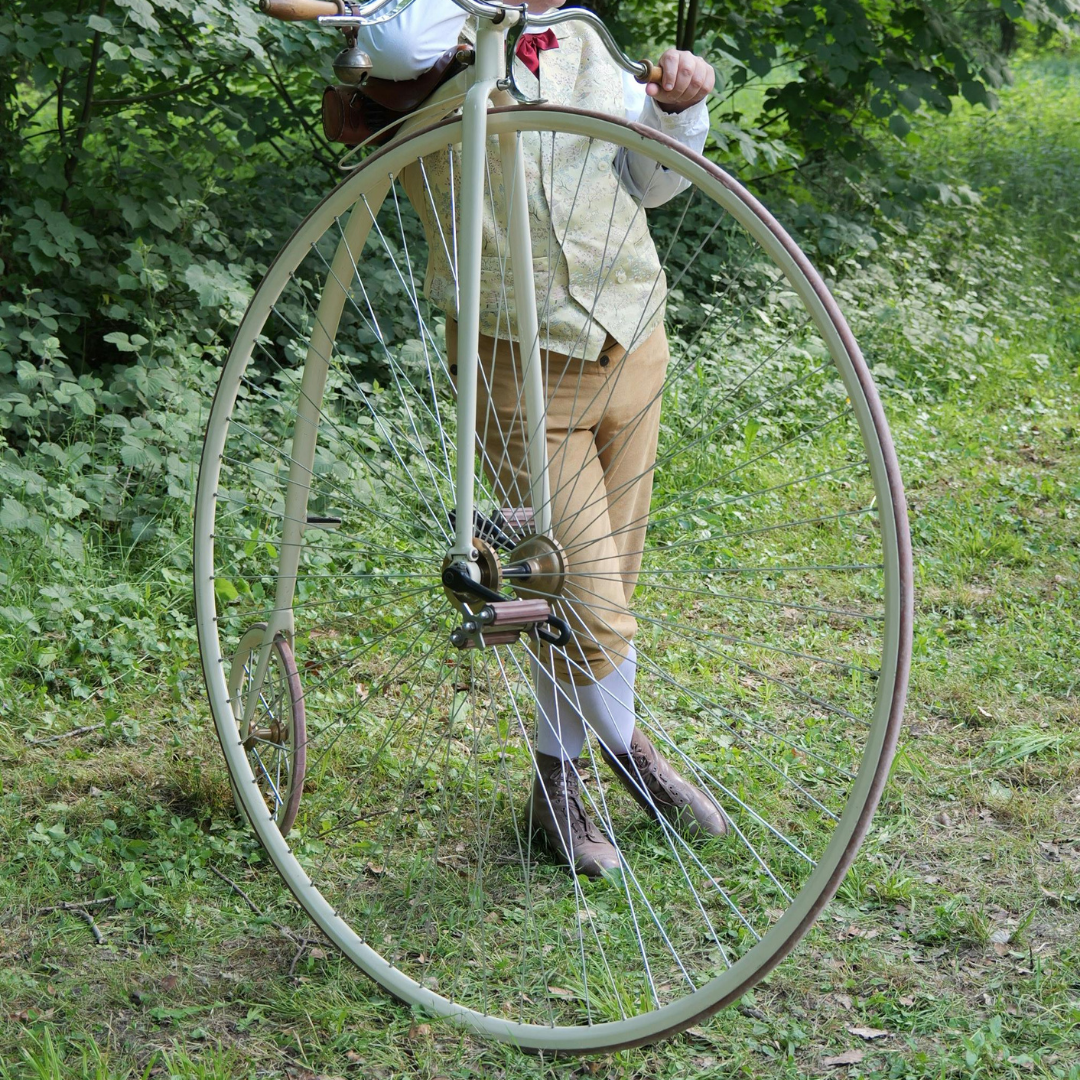
This children’s article, What are Penny-farthings? Why did people ride these strange bicycles?, has been written for native English speakers and learners of English as a second or foreign language. It can help children practise reading and comprehension, learn useful vocabulary, and explore the fascinating story of one of history’s most unusual bicycles. Written by Sinead O’Carroll, an experienced English teacher and writer.
A bicycle with a big difference
Imagine riding a bike where the front wheel is taller than you are! The Penny-farthing, also known as the high-wheeled bicycle, was one of the first bicycles ever made. It became popular in the 1870s and 1880s, long before modern bikes with chains and gears were invented.
It was named after two old British coins, the penny and the farthing. This was because the front wheel was huge, like a penny, and the back wheel was tiny, like a farthing.
Why such a big wheel?
The large front wheel made the Penny-farthing fast. The bigger the wheel, the farther it could go with each turn of the pedals. This meant riders could travel quickly without needing a chain.
There was a problem, though, getting on and off was tricky! Riders often had to climb up using a small step on the back, and falling off could be painful.
A daring ride
Riding a Penny-farthing took courage and balance. Roads in the 1800s were bumpy, and the high seat meant that if a rider hit a rock or hole, they could fall forward over the wheel, ouch! Still, many Victorians loved the challenge and the feeling of freedom it gave.
From fashion to the future
The Penny-farthing was a symbol of adventure and modern life. Riders formed clubs, wore smart cycling outfits, and took part in races. Eventually, a new kind of bike called the safety bicycle replaced it.
The safety bicycle had two equal-sized wheels and a chain, making it safer and easier to ride, and it’s the type we still use today.
You can learn more about the history of bicycles here – National Cycle Museum.

Article vocabulary list
- Penny-farthing – An old-fashioned bicycle with a very large front wheel and a small back wheel, also known as the high-wheeled bicycle
- Gears – Parts that control how fast or easily a bicycle moves.
- Chain – A loop of metal links that connects the pedals to the back wheel on most bikes.
- Courage – The ability to do something difficult or scary.
- Victorians – People who lived during the time of Queen Victoria (1837–1901).
- Adventure – An exciting or unusual experience.
- Safety bicycle – The modern-style bicycle with two equal wheels and a chain.
Comprehension questions
Just click the plus (+) to see the answer
1. Why was the Penny-farthing named after coins?
a) It was used to carry money.
b) Its wheels looked like a big penny and a small farthing.
c) It was sold for one penny and one farthing.
Answer: b) Its wheels looked like a big penny and a small farthing.
2. What made the Penny-farthing move quickly?
Answer: Its large front wheel travelled farther with each pedal turn.
3. What was dangerous about riding a Penny-farthing?
a) It was too heavy to move.
b) Riders could fall from a high seat.
c) It had no brakes.
Answer: b) Riders could fall from a high seat.
4. What bicycle that we still use today came after the Penny-farthing?
Answer: The safety bicycle.
5. What did many Victorians like about riding a Penny-farthing?
Answer: It felt adventurous and exciting.
Sinead is a writer and EFL teacher with eight years’ experience. She’s a native English speaker who loves making news stories fun and easy to understand for children around the world. Her passions include travel, animals, and helping to make the world a kinder, more sustainable place.




